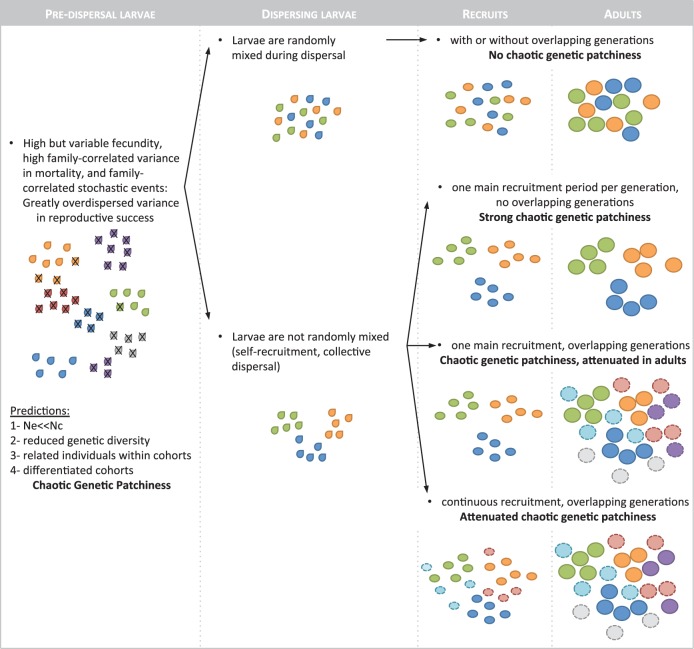Figure 1.
Simplified scenarios where sweepstakes reproductive success may or may not drive CGP in samples taken at different stages of the bentho-pelagic life cycle. Dashed circles represent recruits or adults that were present before younger recruits or adults appear in the population. In this figure, we consider a spatial scale where dispersal is not limited by distance (see the synthesis section for a discussion of the effects of spatially limited dispersal, self-recruitment, and collective dispersal). Note also that whereas in this figure the sweepstakes reproduction effect is represented only at the pre-dispersal stage, it can be enhanced during dispersal in cases when larvae are not well mixed and mortality can thus affect cohorts differently. This figure gives a qualitative idea of the conditions under which CGP may emerge, but our ability to actually observe genetic patterns (“predictions”) depends also on sampling and data analysis. Quantitative predictions, obtained through analytical theory or simulation, should help interpreting empirical observations.

